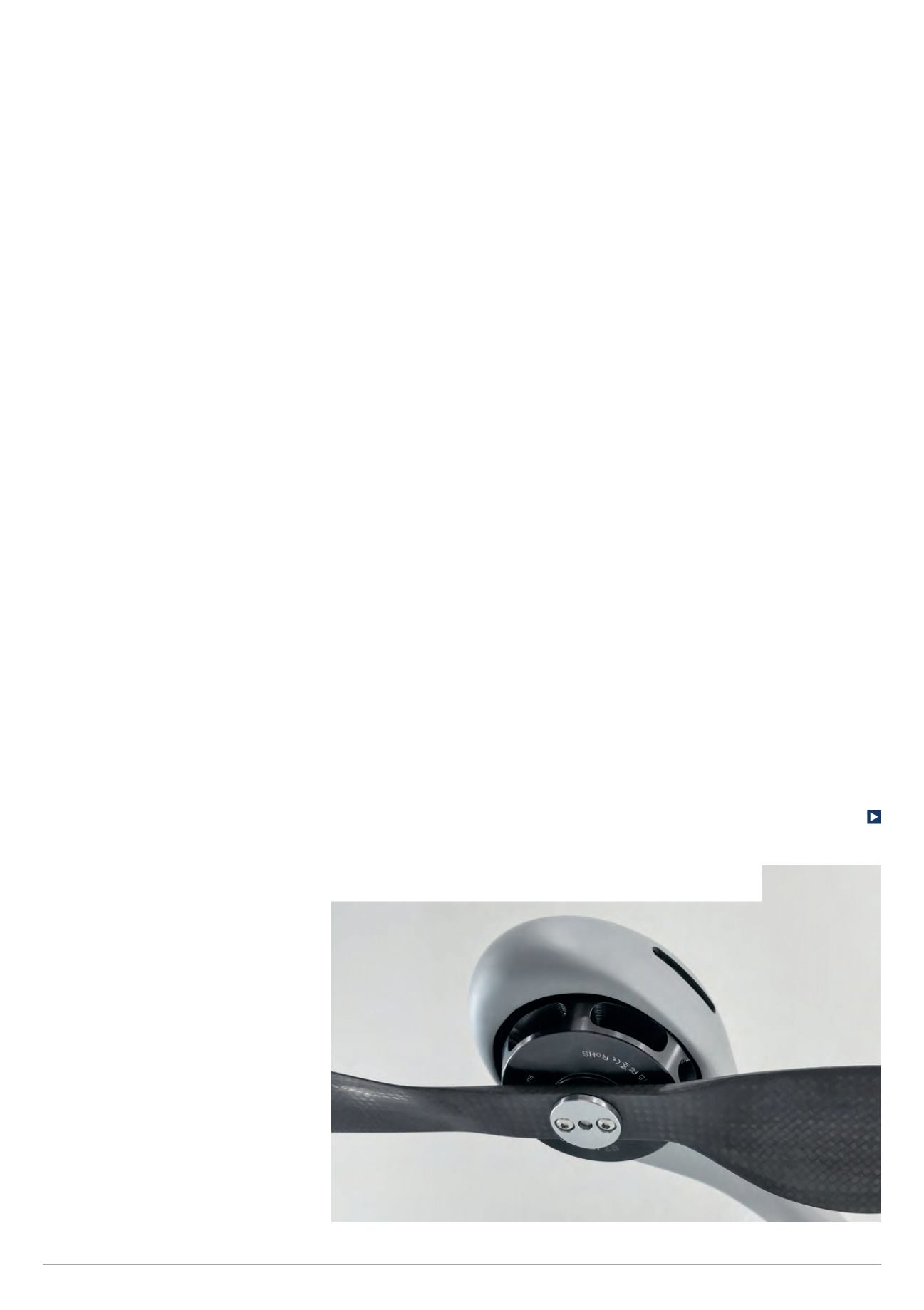

23
R
ather than competing with
top-tier products such as
Insitu’s ScanEagle, Alti’s
innovative new Transition
UAV is intended to fill a
large mid-market gap for long-range
VTOL systems for commercial and
industrial applications that are easy
to operate from any setting and cost
less than $100,000, according to the
company’s owner, Duran de Villiers.
A hybrid in two senses, the Alti Transition
is a fixed-wing craft with a petrol engine
that drives a pusher propeller, and a
battery pack that powers four electric rotors
that provide VTOL and hover capabilities.
Measuring 2.745 m in wingspan, 1.925 m
in length and 0.54 m in height, the aircraft
has a maximum take-off weight of 12 kg
with a payload of up to 2 kg.
Taken together, the wing and tail area
amount to about 8700 cm
2
. The UAV
can fly at up to 30 m/s (108 kph), faster
depending on set-up, and boasts a range
of more than 300 km and an endurance
of up to six hours.
De Villiers says the main challenges in
the development of this unusual vehicle
were achieving the performance and
endurance goals while keeping it small
enough to be easy to deploy and operate,
commenting that positioning the centre of
gravity in relation to the quadcopter rotors
has proved “interesting”.
Pure VTOL
Despite the presence of the pusher
propeller, the Alti Transition is a pure
VTOL machine. However, it is intended to
operate in wing-borne flight as a fixed-
wing craft for most of a mission.
Following a vertical take-off, the aircraft
typically climbs to its transition altitude,
which can be fairly low because it does
not lose altitude as it moves from hover
to forward flight; it then makes a smooth,
level acceleration to wing-borne speed
before powering down the rotors. It then
flies like this for between four and six
hours – endurance is still being tested
– before transitioning back to hover
mode, again with no loss of altitude, for a
vertical landing.
Take-off and landing processes
typically take less than a minute each,
de Villiers says. He emphasises that
the transition back to hover is very
straightforward, without the need for
active braking systems such as air
brakes, although the company is
looking at integrating a parachute for
emergencies. To return to the hover,
the pusher motor quickly goes to idle
and the four electric motors, with their
Proportional Integral Derivative (PID)
Alti Transition
|
Dossier
to the
vertical
The lift motors are custom made from aluminium and steel, with ‘oxygen-free’
copper windings for enhanced resistance to short-circuits
Unmanned Systems Technology
| June/July 2016
Peter Donaldson
explains the development process
behind this ingenious VTOL fixed-wing hybrid UAV









